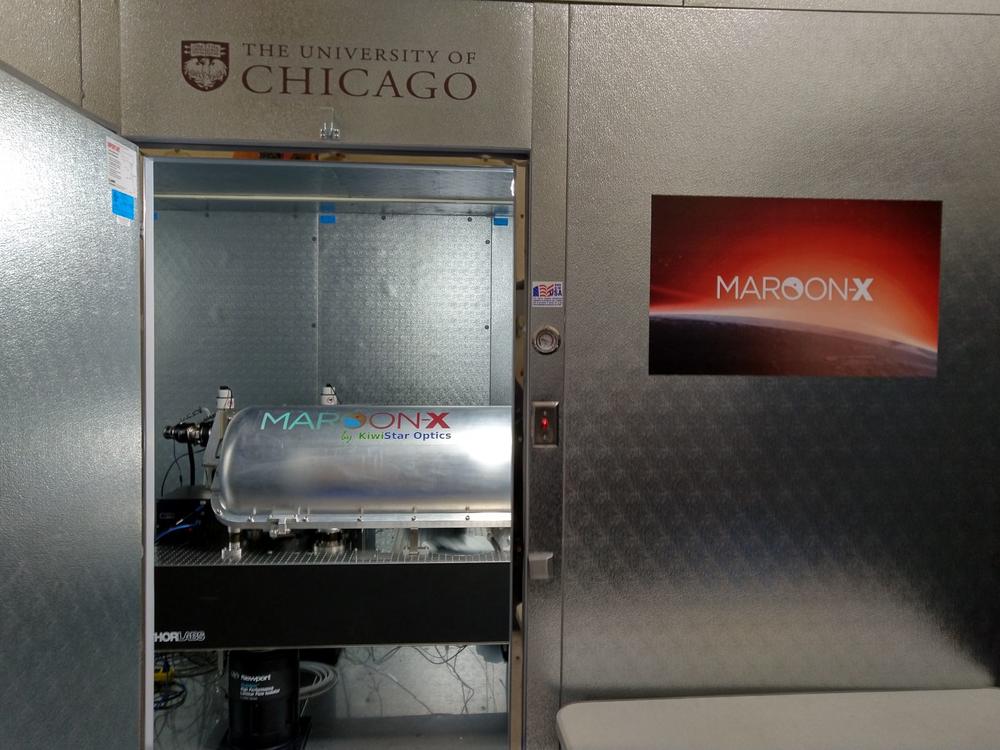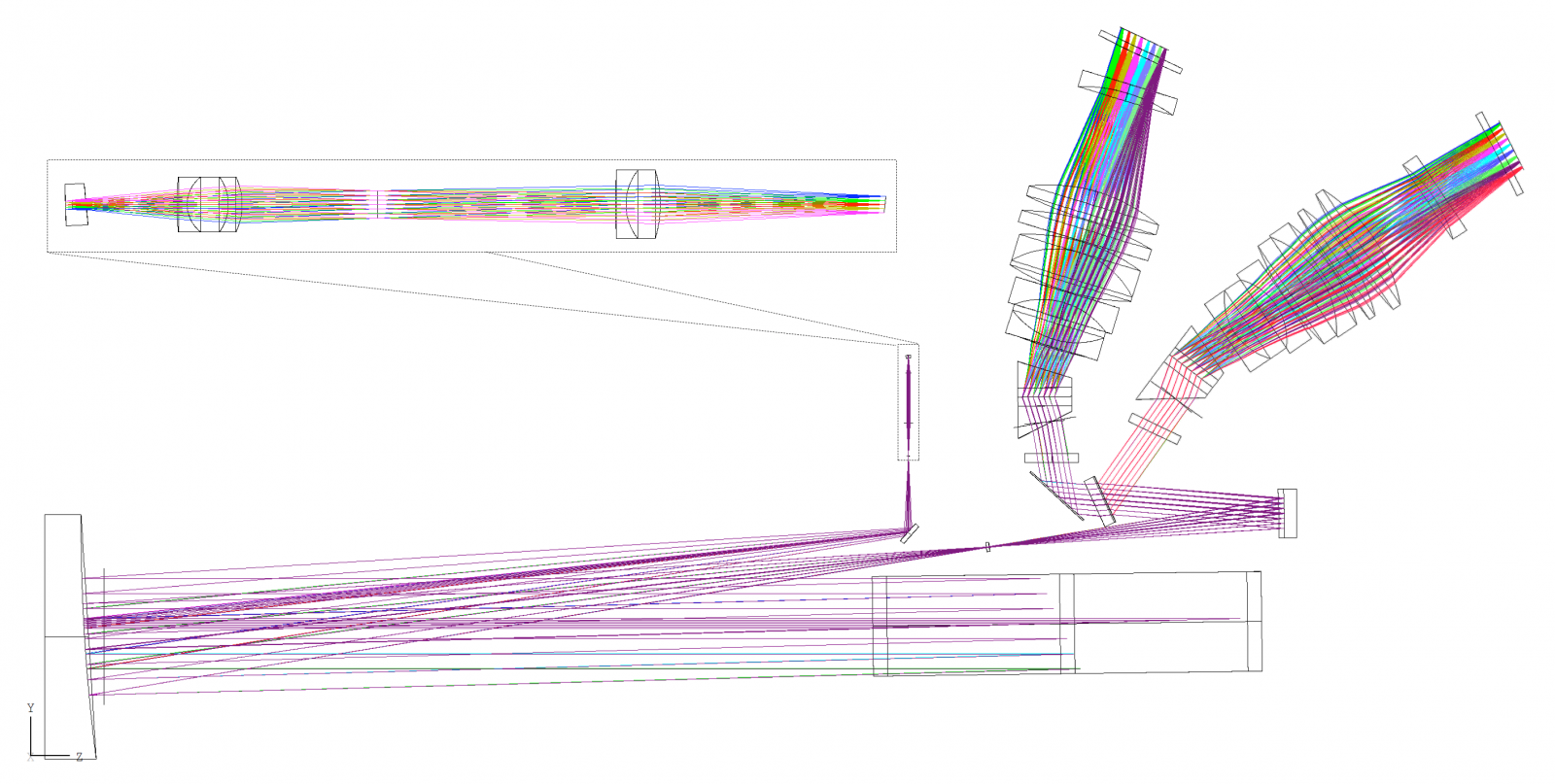
Capability Summary
- Total wavelength range = 500−920 nm
Spectroscopy (Read more)
- Resolution = 82k-88k
- RV precision < 1 m/s (for M dwarfs down to and beyond V = 16 mag)
- Bench-mounted, Fiber-fed, Echelle (VPH grism cross-disperser)
Guiding Options
- PWFS2
MAROON-X (M-dwarf Advanced Radial velocity Observer Of Neighboring eXoplanets) is a new instrument recently constructed at the University of Chicago which is expected to have the capability to detect Earth-size planets in the habitable zones of mid- to late-M dwarfs using the radial velocity method.
The anticipated uses for the instrument are to (1) conduct a radial velocity only survey for potentially habitable planets around nearby mid- to late-M dwarfs and (2) to confirm and measure the masses of low-mass planet candidates identified in the habitable zones of M dwarfs by ground- and space-based transit surveys. These later objects will be the best objects for future atmospheric studies of potentially habitable planets.
The main constraint for the instrument is set by the desired wavelength coverage. The important wavelength range for the instrument is 700 -- 920 nm because this is the region containing the maximum radial velocity information for mid to late M dwarfs. There is no gas cell useful for this region, so the instrument must be intrinsically stable to deliver the desired radial velocity precision.
MAROON-X is thus highly stabilized, both opto-mechanically (main optical elements in vacuum, the whole spectrograph inside an environmental enclosure with mK level temperature stability), and via its fiber feed (octogonal and rectangular fibers, double-scrambler). A stabilized etalon is used to illuminate a calibration fiber to provide a dense comb of emission lines for simultaneous wavelength calibration.
Please also see: http://astro.uchicago.edu/~jbean/spectrograph.html

Zemax rendition of the optical elements of MAROON-X and raytracing. The insert to the upper left shows the telecentric input relay optics which convert the f/5 fiber output (50um wide to the left in the insert) to the f/10 input accepted by the spectrograph (100um slit width).
Announcements
Instrument Team
gn Instrument Scientist
